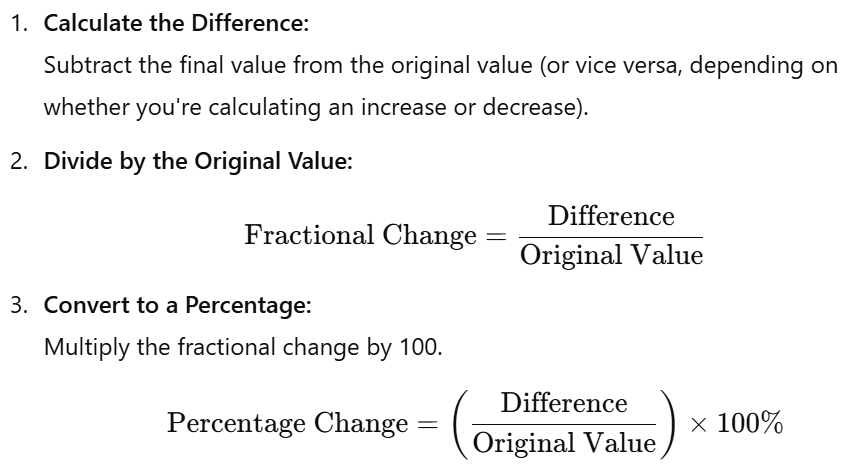P.12 Making Calculations from Data
Key Types of Calculations in Experiments
Accurate calculations are essential for analyzing experimental data and drawing valid conclusions. The following sections explain the purpose, steps, and examples for three fundamental types of calculations: mean, gradient, and percentage change.
1. Mean Calculation
Purpose:
To determine the average value from a set of measurements.
Steps:
- Sum the Measurements:
Add all the individual measurements together. - Divide by the Number of Measurements:
Divide the total by the count of measurements.
Example:
- Measurements: 12.5 µm, 18.6 µm, 13.2 µm, 10.8 µm, 11.3 µm
- Calculation:
- Sum = 12.5 + 18.6 + 13.2 + 10.8 + 11.3 = 66.4 µm
- Number of measurements = 5
- Mean = 66.4 µm ÷ 5 = 13.3 µm
- Note:
Ensure the mean is presented with the same precision as the original measurements (here, 1 decimal place).
2. Gradient Calculation
Purpose:
To determine the rate of change of the dependent variable relative to the independent variable, which is essential for understanding the relationship between variables.
For a Straight Line:

For a Curved Line:
- Draw a Tangent:
At the point of interest, draw a tangent line to the curve. - Construct a Right-Angle Triangle on the Tangent:
Mark the changes in x and y along the tangent. - Calculate the Slope of the Tangent:
The gradient is given by:

3. Percentage Change
Purpose:
To determine the proportion of change relative to an original value, which is useful for comparing changes over time or under different conditions.
Steps:

Example:
- Initial Mass: 250 g
- Final Mass: 221 g
- Calculation:
- Change in mass = 250 g − 221 g = 29 g

4. Important Calculation Tips
- Show All Steps:
Always display each calculation step to enhance clarity and ensure accuracy. - Use Appropriate Precision:
Match the number of decimal places in your results to that of the original data. - Check Units:
Ensure that all measurements and final answers include consistent and appropriate units.
5. Summary of Key Formulas
